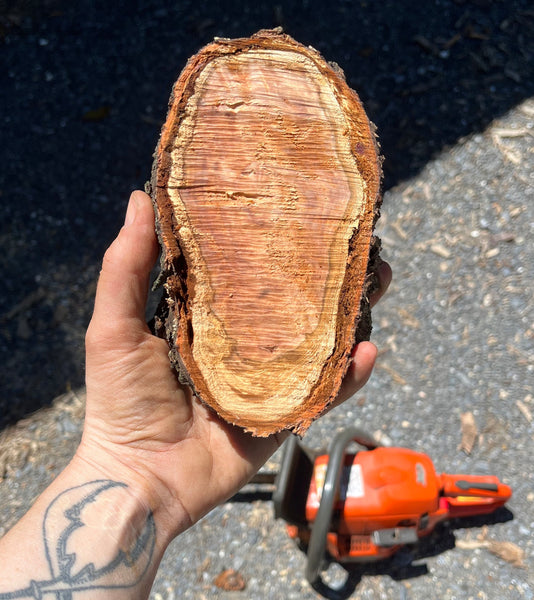What is Burl

A burl is a strange-looking collection of tree cells, which are called callus tissue. A burl is made up of a tree’s bud tissue that has not sprouted into foliage or grown into a twig. It has a woody or barked surface. As a burl grows, it incorporates the tree’s undeveloped buds that surround it and folds them into its expanding form. Because these cells can grow faster than regular tree cells and can grow during all seasons, burls expand at their own rate into unpredictable sizes and appearances. In human terms, it can be compared to a fast-growing but non-malignant tumor.
If you cut open a burl, you’ll find wood inside. As with sawn lumber, cutting in different directions across a burl will expose different wood grain patterns. Unlike typical tree lumber, the patterning or figuring of a burl’s wood is more complex and entirely unpredictable.
Because burls are wound response tissue, they grow where and how they “need” to in order to protect a tree. As they grow, their un-sprouted bud tissue is folded, rolled, or compressed, creating unique growth patterns within the burl. Some may even contain mineral deposits from flooded soil or air pockets and interior bark ridges from eroded areas of wood that have been incorporated into the burl.
Source: https://organicplantcarellc.com/what-is-a-burl/

I harvest burl myself. I source my wood from dead trees from my family farm. This is where my woodworking skills come in handy with my jewelry pieces. From time to time I am commissioned for chainsaw carvings. As I am carving sculpture, I set favorable scraps aside to incorporate in my jewelry. The wood in my jewelry is sanded with high grit sandpaper to bring out the most details of the wood grain and finished with a simple layer of Tung Oil.


